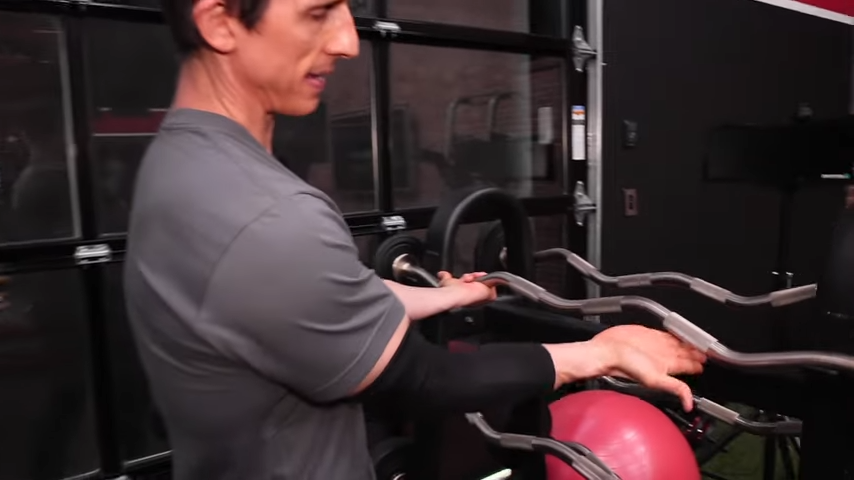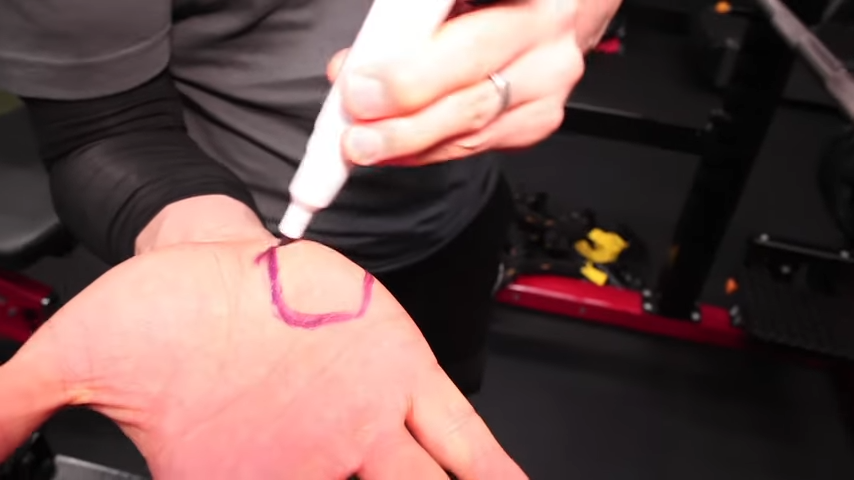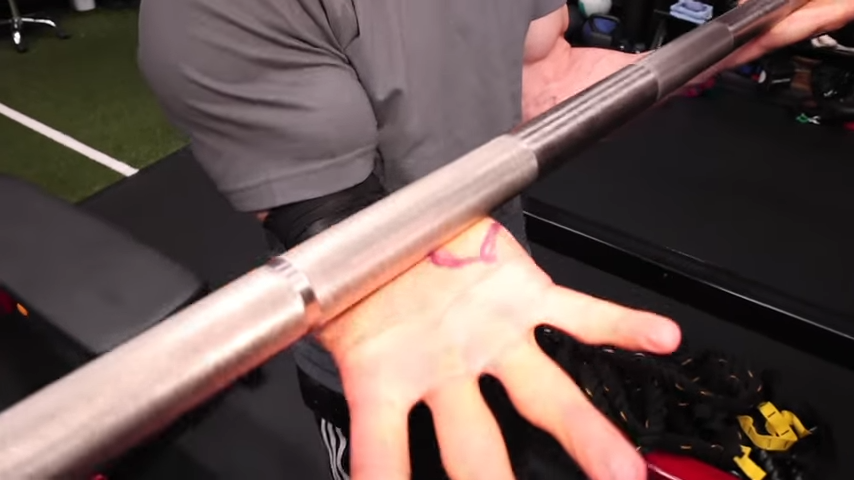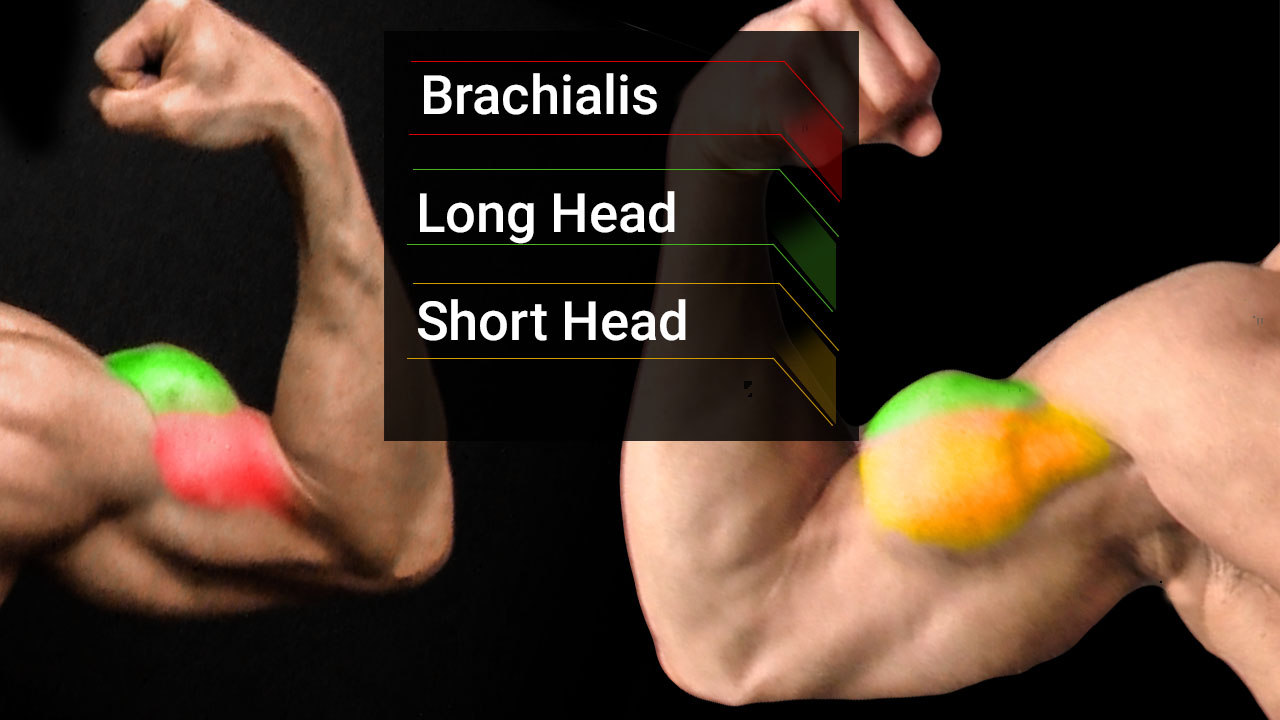
CABLE CURLS WITH CORRECT MECHANICS
The Cable Curl is one of the most iconic gym movements for biceps growth and the key to building strength.
But here’s the truth:
Even the best exercises can turn into wasted effort if you’re not dialed into the details.
The Cable Curl keeps constant tension on your biceps, making it a key player in building muscle strength and targeting those stubborn biceps brachii, but most people get it wrong by ignoring form and grip.
Today, we’re going to break down how to master the Cable Curl with perfect form, examine curl benefits and avoid common mistakes.
These same tips also apply to variations like Concentration Curls, Spider Curls, and Rope Bicep Curls, to hit your muscles from every angle.
It doesn’t matter if you’re using a flat weight bench, focusing on cable attachments, or transitioning from heavy Dumbbell Curls, understanding the mechanics of this movement is the key to rapid strength gains.
Get movement ready, because we’re about to take your biceps from ordinary to extraordinary—let’s get into it!
CABLE CURL: MUSCLES WORKED
Let’s break down what’s really happening when you’re cranking out those Cable Curls.
Understanding the anatomy of your biceps muscle isn’t just a science lesson—it’s your roadmap to maximizing muscular strength and muscular hypertrophy.
A strong mind-to-muscle connection is your ticket to bigger hypertrophy gains, better form, and fewer injuries.
When it comes to Cable Curls, biceps brachii strength takes center stage.
This muscle is split into two heads: the short head and the long head, each playing a unique role in your curl variations, including Traditional Biceps Curls, Preacher Curls, and Hammer Curls.
BICEPS BRACHII: SHORT HEAD


The short head sits on the inner side of your biceps muscle, closest to your body.
It’s responsible for elbow flexion, the very movement that drives every biceps exercise you perform—from Standard Curls to cable machine variations.
The short head is also helpful during shoulder flexion, which helps stabilize your shoulder joints during any upper body movement.
The short head’s work during your Biceps Cable Curls is essential for maintaining tension throughout the range of motion, especially when using the cable machine in a seated position or preacher bench.
BICEPS BRACHII: LONG HEAD


The long head is what gives your biceps that defined peak.
Originating from the shoulder blade, it runs along the outer side of your arm, through the bicipital groove.
The long head of the biceps doesn’t just look good; it plays a role in elbow flexion and supination—think about how the twist at the top engages your biceps long head. Same goes for the Cable Rope Hammer Curl. The long head is one of the most important One-Arm Cable Curl muscles.
This is the part of your biceps that really gets targeted when you focus on exercises that keep the muscle under constant tension, like the biggest Cable Bicep Curl or the Single Arm Cable Curl.
BRACHIALIS


The brachialis isn’t technically part of the biceps, but if you’re aiming for serious hypertrophy gains, you can’t ignore it.
This muscle sits underneath your biceps and contributes significantly to elbow flexion.
It’s a hidden powerhouse that comes into play during every curl movement, particularly when you use an underhand grip or switch up your curl variations with the curved curl bar.
Targeting the brachialis with Cable Bicep Curl variations can lead to bigger overall arm size and enhanced bicep strength.
FOREARMS
Forearms provide the grip strength you need to stabilize the bar, handle attachment, or cable rope attachment during your Biceps Cable Curl exercises.
The brachioradialis forearm muscles are particularly engaged during overhand position and hammer position curls, helping you maintain wrist stability and control the path of motion.
If you neglect your forearms, you risk muscle imbalances that can compromise your strength and form during your biceps exercises.
Keeping your forearms strong ensures that you can maintain constant tension through each movement, whether it’s a Traditional Cable Curl, a Double Bicep Cable Curl, or any other variation that challenges your grip and control.
THE ONE FORM CHANGE YOU NEED TO MAKE
So, you’re looking to build those biceps, and you’re probably hitting some version of the Cable Curl with a bar attachment.
You’ve got your feet shoulder-width apart, shoulder squared up to the cable machine, and you’re ready to curl away.
But here’s the thing: how you grab that bar can make or break your gains. When you approach the cable machine, you’ll notice the EZ-curl bar attachment is engineered to hang in one position.
This setup often leads us to grab the bar in a way that feels comfortable but isn’t necessarily optimal for muscle growth. The bar offers two grip options: a narrower, palms-up position or a wider, more natural shoulder-width grip.
Most of us instinctively go for the wider grip, but here’s the catch—doing so can actually compromise the effectiveness of your Cable Biceps Curl.
When you grab the bar at shoulder-width, you’re in a less supinated (palms-up) position, which limits the activation of the biceps brachii.
This means you’re engaging more of the brachialis muscle, which, while important, isn’t your primary target for isolation exercises like the Cable Bicep Curl benefits.
To get the most out of this movement, you need to optimize your starting position.
Here’s what you do:


Flip the bar before you grab it. This will naturally put your hands in a more supinated position, allowing for better activation of the biceps brachii as you curl.
As you perform the movement, focus on maintaining a slight backward bend in your wrists.
This small adjustment not only enhances wrist stability limitations but also keeps the tension on your biceps throughout the range of controlled motion.
Why is this important?
Because when you keep your wrists slightly extended, you improve the angle of pull on the biceps and the lengthened position.
The cable becomes more perpendicular to your forearm, increasing the biceps under tension, especially at the top of the curl.
This results in more effective muscle growth and hypertrophy over time.
But what if you’re using a straight bar attachment? Well, the same idea applies here.
When you grab the straight bar, focus on where you’re directing your force.


The key area is the inside portion of your hand, specifically the area around the thumb and index finger.
By pushing through this part of your hand during your Cable Machine Bicep Curls, you can encourage more supination, which brings your elbows tighter into your sides.
This setup is important because when your elbows drift out, you lose tension on the biceps and shift some of the workload to other muscles, limiting the isolation effect.
Here’s how it works:


When you grip the straight bar attachment, think about pushing through the inner portion of your palms.
This subtle shift in your hand positions allows your wrists to naturally supinate as you curl up, even with a bar that doesn’t have a natural rotation like a Dumbbell Bicep Curl.
This simple adjustment helps you maintain a more effective angle of pull, maximizing biceps activation and promoting muscle growth.
Getting your elbows tucked in this way also prevents them from flaring out, which is a common Cable Bicep Curl mistake.
By keeping your elbows close, you ensure that you don’t start in a compromised position, which is essential for proper Cable Bicep Curl form and optimal muscle engagement.
This is what sets the straight bar attachment apart as a challenging Cable Bicep Curl exercise—when done correctly, it forces your biceps to work harder to manage both the slight angle and tension of the cable.
And don’t forget, this isn’t just about one exercise; the principles apply across your usual arm routine including Cable Rope Bicep Curls, Bar Bicep Cable Curls, or even transitioning to Classic Dumbbell Curls.
That’s how you take your strength training to the next level, ensuring consistent hypertrophy gains over time.
The next time you hit the cable machine for your biceps workout, make sure you’re dialing in your grip and wrist position.
It’s a small tweak that can lead to big gains, making your Cable Bicep Weight Curls more challenging and rewarding.
HOW TO DO THE CABLE CURL
If you’re not doing the Cable Curl, you’re missing out on one of the best ways to blow up your biceps.
Forget just going through the motions—this move keeps your biceps under constant tension, forcing them to work harder from start to finish.
But here’s the catch: it’s only as effective as your form.
One small mistake, and you’re leaving gains on the table.
Let’s break down exactly how to master the Cable Curl so you can build bigger, stronger biceps with every rep.
CABLE CURL


HOW TO DO THE CABLE CURL:
- Position yourself toward the machine and move your feet set hip-width apart. Secure the straight bar attachment to the cable machine’s low pulley setting. Square your shoulders to the machine, keeping your back straight and your chest up.
- Hold the bar with a palms-up (underhand) grip, positioning your hands at shoulder width. To maximize biceps engagement, rotate the bar before gripping to set your hands in a fully supinated position.
- Focus on pushing through the inner portion of your hands, near the thumb and index finger. This encourages supination and maximizes biceps activation.
- Keep your wrists slightly extended (bent back) throughout this cable movement. This helps maintain wrist stability and keeps the tension on your biceps.
- Start with your arms fully extended, elbows close to your body, and the bar in the down position. Curl the bar upwards in a controlled motion, keeping your elbows tucked into your sides. Avoid letting your elbows drift out to maintain optimal tension on the biceps brachii.
- As you curl, take the movement slow and keep your wrists extended to enhance the angle of pull on your biceps.
- As you reach the top of the curl, contract your biceps forcefully and pause briefly. Make sure the cable stays at a 90-degree angle to your forearm to maintain peak tension on the muscle.
- Avoid leaning back or using momentum; the movement should be smooth and controlled.
- Slowly lower the bar back to the starting position, maintaining a bit of tension on the biceps throughout the negative movement.
- Keep your wrists extended and elbows close to your body to prevent shifting the workload to other muscles.
WHAT MAKES IT EFFECTIVE: The Cable Bicep Curl keeps your biceps under constant tension from start to finish, hammering the muscle with every rep for serious strength and muscle growth.
CABLE BICEP CURL MISTAKES
Mastering the Cable Bicep Curl is all about nailing the form, but there are a few common mistakes that can derail your progress.
Correcting these Cable Bicep Curl mistakes will keep your form effective, helping you build strong, defined biceps with every workout.
Let’s make sure you’re not just moving weight but maximizing every rep for strong biceps.
INCORRECT HAND POSITION AND GRIP
One of the biggest mistakes is not positioning your hands correctly on the cable bar attachment.
Grabbing too wide or in a compromised position can reduce the biceps brachii activation and shift the focus to other muscles like the brachialis.
To get the most out of your Cable Bicep Curl exercises, ensure your grip is slightly narrower to encourage a full supination and optimal muscle engagement.
USING TOO MUCH WEIGHT
A heavy weight isn’t always your friend, especially if it’s sacrificing your form.
Avoid using excessive weight that forces you to swing your body or lean back.
Stick to a lighter weight that allows you to maintain steady motion and keep the tension directly on the biceps throughout the range of angles.
ELBOW FLARING
When your elbows flare out during the movement, you’re not in the preferred position for maximum biceps isolation.
This common mistake can shift the load away from the biceps and put unnecessary strain on your shoulders.
Keep your elbows tucked close to your body at a 90-degree angle to maintain the correct angle of pull and maximize the benefits of Cable Bicep Curls.
LEANING BACK OR USING MOMENTUM
Using momentum to get the bar up is a shortcut that only cheats your gains.
This negative movement takes tension off your biceps and puts your back in a compromised position.
Focus on controlled motion, and keep your body stable, avoiding any lean.
This isolation movement is meant to target your biceps, not involve your lower back.
IMPROPER WRIST POSITION
If your wrists are flexing during the curl, you’re losing the mechanics for growth.
Instead, maintain a slight backward bend in your wrists to keep the cable under tension and prevent the force from shifting away from your biceps.
This is key to maintaining optimal tension and achieving improved strength in the muscle.
RUSHING THE ECCENTRIC PHASE
The lowering phase of the curl, or the eccentric, is just as important as lifting.
A common mistake is letting the bar drop too quickly, missing out on the benefits of time under tension compared.
Slow down the negative movement to keep your biceps under constant load and stimulate more muscle growth.
NOT VARYING ANGLES AND ATTACHMENTS
Sticking to just one type of curl can lead to discrepancies in strength and limit your results.
Incorporate variations like the Standing One-Arm Cable Curl, Cable Hammer Curl, and even Cable Preacher Curl to hit the biceps from a variety of angles to maximize curl benefits.
Switching up attachments—like using the rope or single-hand attachment—keeps your arms workout routine fresh and challenges your muscles in new ways.
Mastering the Cable Curl is all about dialing in your form and avoiding the common mistakes that can rob you of your gains.
By keeping constant tension on your biceps and focusing on the right angles and positions, you can build serious muscle strength and size.
Apply these tips, perfect your technique, and watch your biceps grow stronger with every rep.
If you’re having trouble creating an arm workout, we’ve got you covered! Check out our ATHLEAN-X programs to see which is the best fit for your goals and fitness level.

- The Cable Curl crushes your biceps with constant tension from start to finish, making every rep count for serious muscle growth and strength gains.
- Here’s how to do Cable Curls:
- Face the cable machine. Clip the straight bar attachment to the lowest pulley on the machine. Keep your back straight, chest lifted, and shoulders aligned to create a solid, stable foundation.
- Grab the bar with an underhand grip, palms facing up, with your hands at shoulder width. Flip the bar slightly before gripping to fully supinate your wrists and maximize biceps activation.
- Focus on driving through the inside of your hands near the thumb and index finger. This encourages full supination and forces your biceps to take control of the movement.
- Keep your wrists slightly bent back throughout the curl. This minor adjustment helps stabilize your wrists and keeps the tension locked on your biceps.
- Begin with your arms fully extended, elbows close to your torso, and the bar hanging down. Curl the bar up in a controlled manner, keeping your elbows tucked in. Don’t let them flare out—keeping them tight ensures maximum tension on the biceps brachii.
- As you lift, move slowly and maintain that slight wrist extension to optimize the angle of pull. This keeps your biceps working hard from start to finish.
- At the peak of the curl, squeeze your biceps hard and hold briefly. Ensure the cable is perpendicular to your forearm to maximize muscle engagement.
- Lower the bar slowly back to the start position, maintaining tension on your biceps during the negative phase. This part is crucial—don’t rush it.
- Keep your elbows in and your wrists extended to avoid shifting the load to other muscles. This move is all about your biceps, so stay focused on keeping the tension where it counts.
HOW TO DO CABLE CURLS FAQS
Cable Curls are all about targeting the biceps brachii—specifically, the short and long heads of the muscle—giving you that full, sculpted look.
But unlike Traditional Dumbbell Curls or Weight Bicep Curls, Cable Curls keep your muscles under constant tension throughout the entire range of motion, thanks to the cable setup.
This tension is key for maximizing hypertrophy and strength gains, as confirmed by the Journal of Strength and Conditioning Research.
Not just limited to the standard version, you can switch up the angle of load hits and vary your grip with options like the biggest Lying Cable Curl or Rope Hammer Curl benefits to hit the muscle fibers differently.
These variations can help address discrepancies in strength and muscle development that you might miss with other isolation exercises.
Plus, with Cable Curls, you have the flexibility to progress or regress the exercise easily by adjusting the weight, changing the attachment, or shifting to single-arm versions like the One-Arm Cable Curl, which adds the benefits of a unilateral movement and improves muscle balance.
Unlike Dumbbell Biceps Curls, where the weight can fluctuate in stability, Cable Curls make a great go-to for strength training beginners thanks to the exercise providing a steady angle of pull.
Need something different? Try exercises alongside Cable Curls, like Machine Bicep Curl variations or using a flat gym bench for support to mix things up.
Absolutely, Cable Curls are one of the safest and most effective bicep exercises you can include in your routine—if you do them right.
The key advantage here is the controlled environment that the cable machine provides, making it easier to manage the weight for stability and reduce stress on your joints compared to other bicep curl alternatives.
Unlike free weights, where the position of extremities can vary wildly, Cable Curls allow you to maintain a consistent angle in relation to your forearm, keeping tension on the biceps throughout the entire range of motion.
This makes them especially great for strength training beginners who need a safe, predictable movement to build a strong foundation.
If you’re still worried about safety, consider the Bicep Cable Curl alternatives available.
You can start with lighter weight or try variations like the One-Arm Cable Curl to focus on unilateral control and muscle balance.
If you want a gentler approach, try a Cable Bicep Curl regression exercise. The Lying Cable Curl benefits added support and reduced strain, making it a perfect option for anyone dealing with stability limitations.
And let’s not forget, Cable Curls also engage your forearm exercises, adding an extra layer of stability and control to your routine.
So, whether you’re looking for a bicep cable curl progression or just need a safe way to add variety to your strength-based training, complete Cable Curls are the move to get it done without compromising your safety.
You bet they will—if you’re doing them right!
Cable Curls are a powerhouse when it comes to building big biceps because they keep your muscles under constant tension throughout the entire movement.
That’s the kind of targeted stress your biceps need to grow.
The cable machine provides a smooth, controlled path of motion, unlike dumbbells, where gravity can work against you in ways that compromise the exercise.
One of the biggest advantages? The versatility in progression.
You can easily adjust the weight and try different attachments to suit your level, making Cable Curls perfect for anyone from beginners to advanced lifters.
Need a Cable Bicep Curl progression? Use heavier weights, alter your grip, or try a variety of strength based cable bicep curl variations like the Rope Hammer Curl or One-Arm Cable Curl to hit every angle of the muscle.
REFERENCES

Jeff Cavaliere M.S.P.T, CSCS
Jeff Cavaliere is a Physical Therapist, Strength Coach and creator of the ATHLEAN-X Training Programs and ATHLEAN-Rx Supplements. He has a Masters in Physical Therapy (MSPT) and has worked as Head Physical Therapist for the New York Mets, as well as training many elite professional athletes in Major League Baseball, NFL, MMA and professional wrestling. His programs produce “next level” achievements in muscle size, strength and performance for professional athletes and anyone looking to build a muscular athletic physique.



































